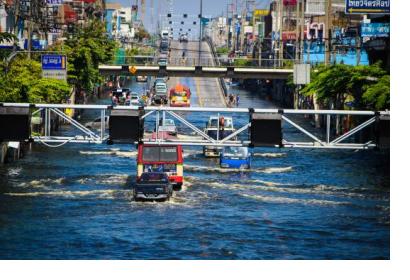The handbook "Sharing Space-based Information: Procedural Guidelines for Disaster Emergency Response in ASEAN Countries" provides procedural guidelines for sharing space-based information during emergency response and aims to support disaster managers become familiar with the systematic approach necessary for using satellite-derived and geospatial information applications.
The United Nations Economic and Social Commission for Asia and the Pacific (ESCAP), in collaboration with the Operational Satellite Applications Programme (UNOSAT) of the United Nations Institute for Training and Research(UNITAR), and the United Nations Platform for Space-Based Information for Disaster Management and Emergency Response (UN-SPIDER) of the United Nations Office for Outer Space Affairs (UNOOSA), the ASEAN Coordinating Centre for Humanitarian Assistance on Disaster Management, space agencies and national disaster management authorities in Association of Southeast Asian Nations (ASEAN) countries, have published the handbook with the aim to create standard processes and procedures across agencies to coordinate national activities as well as regional cooperation and support during emergencies.
More and more free satellite-data for emergency response is becoming available and accessible, but end-users are frequently uninformed about such global and regional initiatives. The procedures for requesting space-based information from the growing number of data providers can vary, with no consolidated set of instructions, as there are a vast number of platforms for sharing information at national, regional and international levels.
Seven steps for sharing space-based information during emergency response
The guidelines are structured in seven steps. Each step outlines the procedural considerations for evaluating the need for space-based information support, acquiring and sharing satellite-derived imagery and products, and using specific products. Additionally, each step includes a decision flow diagram that guides the user through the process.
Step 1 is made up of the decision if Earth observation support is needed. This follows a needs analysis in order to ascertain the geospatial information needs for the specific disaster in Step 2. Step 3 consists of assessment of the capabilities for downloading, processing, developing and analysing products to assist emergency response activities is required. Step 4 comprises the taking of action in the form of making a request for either obtaining satellite imagery and raw data or geospatial products. The final three steps are the dissemination of information to the relevant authorities, the use of geospatial products for decision support and the provision of feedback.
Field-tested and continually updated guidelines
The publishers have developed the guidelines in close collaboration with operational staff so that they are based on the best practices in the region. Large-scale consultations led to the identification of operational needs during a series of workshops held in the years 2015 and 2016. The guidelines have been tested under various circumstances in the field in several workshops conducted by UN-SPIDER together with UNOSAT, UN-ESCAP and the ASEAN Coordinating Centre for Humanitarian Assistance on Disaster Management, for instance in the 4th ASEAN workshop in April 2016 entitled "Simulation exercise on the procedural guidelines for sharing during emergency response".
The guidelines are promoted and disseminated by all relevant agencies as good practice from the Asia-Pacific region. Some countries have adopted these guidelines as standard procedure while many others have expressed their interest to adopt similar practices.
The guidelines, however, form a working document which needs to be continually updated as procedures change and in order to keep agencies prepared and on standby through simulation training, drills and related preparedness exercises.

